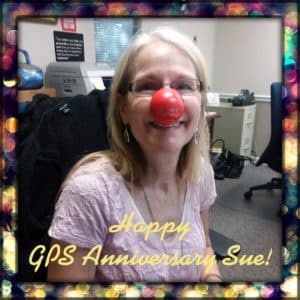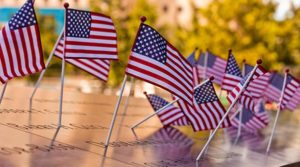Hot Tips for Summer Safety
Hot Tips for Summer Safety
Summer is well under way in North America, and with the sun and fun comes a number of safety concerns to keep in mind.
By Jessica Davis Jul 03, 2018 via Occupational Health & Safety
Summer is well under way in North America, and with the sun and fun comes a number of safety concerns to keep in mind. Many safety-related agencies and organizations have issued safety warnings and tips for a variety of summer celebration hazards and activities. We’ve collected them here for you, organized under the categories of heat/fire safety, bug-related safety, water safety, and safety on amusement park rides.
Heat and Fire Safety
Sun Exposure (via CDC NIOSH)
- Wear a broad spectrum sunscreen with a minimum of SPF 15.
- Follow the application directions on the sunscreen bottle.
- Apply sunscreen liberally (a minimum of 1 oz.) at least 20 minutes before sun exposure.
- Make sure to cover the ears, lips, neck, tops of feet, and backs of hands.
- Reapply sunscreen at least every 2 hours and each time you get out of the water or sweat heavily.
- Throw away old sunscreen, as sunscreens lose their potency after 1-2 years.
- Some sunscreens may not work as well when used with insect repellent, requiring more frequent reapplication when the two are used together.
- Wearing protective clothing can also help prevent sunscreen, particularly high-SPF clothing.
- Workers should wear wide-brimmed hats and sunglasses. Sunglasses with 100 percent UV protection and side panels are recommended.
Hot Cars (via Michigan Department of Licensing and Regulatory Affairs)
- Always check the vehicle for passengers and pets after parking.
- Remember that the inside of a parked car can reach up to 120 degrees Fahrenheit within minutes on a 78-degree day, and 160 degrees in less than 10 minutes on a 90-degree day.
- If you see a person or animal trapped in a hot car, have the driver paged in the nearby store and/or call 911 immediately.
Grilling
According to NFPA statistics, July is the peak month for grilling fires. In addition to the fire hazards posed by grills, they can also release carbon monoxide, a deadly, odorless, colorless gas. Follow these tips from Michigan LARA to help prevent accidents.
- Check for leaks or breaks with gas grills.
- Clean the grill before use to eliminate fire hazards posed by heavy grease buildup.
- Always grill outdoors. Never grill indoors, on a balcony, or in the garage.
- Grill on a level surface at least 10 feet away from the house, garage, deck, or any flammable material.
- Keep children and pets at least three feet away from the grilling area.
- Never leave the grill unattended.
- Don’t overload the grill with food. Excessive fat and grease dripping on flames can ignite large flare ups.
- Keep a fire extinguisher close by and know how to use it. Keep a spray bottle or bucket of water handy for minor flare ups.
Bug Safety
Ticks (via CDC NIOSH)
- Wear a hat and light-colored clothing, including long-sleeved shirts and long pants tucked into boots or socks.
- Use insect repellents that provide protection for the amount of time you will be outdoors:
- Use repellents such as Permethrin for greater protection.
- Check your skin and clothes for ticks every day. The immature forms of these ticks are very small and may be hard to see.
- Wash and dry work clothes in a hot dryer to kill any ticks present.
- Learn the symptoms of tick-borne diseases.
- If you develop symptoms of a tick-borne disease seek medical attention promptly. Be sure to tell your health care provider that you work outdoors in an area where ticks may be present.
Mosquitoes (via National Safety Council)
- To prevent mosquito bites, use Environmental Protection Agency-registered insect repellant with DEET and wear long-sleeve shirts and long pants
- Read product labels when using insect repellant and apply as directed
- Do not leave doors or windows propped open
- Once a week, scrub or empty planters, birdbaths, vases and flowerpot saucers; mosquitoes lay their eggs in standing water
- Use EPA-approved indoor and outdoor flying insect spray or foggers
- Turn on air conditioning; mosquitoes prefer warm, damp and dark spaces
Water Safety
There are many electrical hazards in swimming pools, hot tubs and spas, on board boats, and in the waters surrounding boats, marinas, and launch ramps. One such danger is electric shock drowning (ESD), when marina or onboard electrical systems leak electrical current into the surrounding water. The current then passes through the body, causing paralysis that results in drowning. In addition, drowning is the leading injury-related cause of death for children ages 1-4 and the third leading cause of injury-related death among children age 19 and under.
Michigan LARA offers the following safety tips for summer water-related activities:
Swimming
- Never swim near a marina, dock, or boatyard, or near a boat while it’s running.
- Never leave children unattended near any body of water or pool.
- If you are around water and your child is missing, always check the water first. Seconds count.
- Always check the depth of the water before diving in.
- Never dive in the shallow end of a pool or into above-ground pools.
- Wear Coast Guard-approved life jackets while on a boat or around an open body of water or while playing water sports.
Boating
Nearly 71 percent of all boating fatalities are caused by drowning, and 85 percent are a result of not wearing a life jacket, according to Michigan LARA.
- Equip you and your passengers with Coast Guard approved life jackets.
- Complete a boater’s safety course to know and understand your boat’s full operation.
- Know boating laws and be courteous to other boaters.
- Always check water and weather conditions before taking the boat out.
- Don’t overload the boat with passengers and cargo.
Amusement Park Rides Safety
The New York Department of Labor recommends the following to make amusement park rides as safe and fun as possible:
- Read and follow all warnings and instructions.
- Keep hands and feet inside the ride while it is moving.
- Don’t reach toward fences or barriers.
- Secure loose clothing and long hair.
- Don’t drink and ride; you put yourself and others at risk.
- Don’t stand or attempt to leave a ride until it comes to a complete stop.
- Check restraining devices to make sure they are properly latched. If the equipment does not work, exit the ride.
- Avoid horseplay; it’s dangerous.
- Never attempt to unlock or loosen a restraining device until instructed by the operator.







